Arsenal's biggest rivals: Who are the Gunner’s biggest opponents?
Football
Footballers love the crowd and the noise of fans cheering and singing their names. One of the most popular and energetic leagues is the English Premier League. Their fans are often full of energy and passion when supporting the teams. The Premier League stadium capacity sizes vary from one club to another.
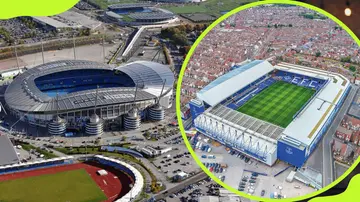
This article centers on soccer stadiums whose teams currently play in the English Premier League. So, find out below the teams with the biggest stadiums in 2024, the capacities of these sports arenas, and the highest attendance these stadiums have ever recorded.
The top English flight has 20 teams, each with its own home ground. The top teams in the league have arenas that can carry up to 50,000 fans, while the small clubs can accommodate around 10,000 people. Here is a list of the top 20 Premier League stadiums and their capacities:
Arsenal's biggest rivals: Who are the Gunner’s biggest opponents?
Football
Rank | Stadium | Capacity | Team |
1. | Old Trafford | 74,031 | Manchester United |
2. | Tottenham Hotspur Stadium | 62,850 | Tottenham Hotspur |
3. | London Stadium | 62,500 | West Ham United |
4. | Anfield | 61,276 | Liverpool |
5. | Emirates | 60,704 | Arsenal |
6. | Etihad | 53,400 | Manchester City |
7. | St. James' Park | 52,247 | Newcastle United |
8. | Villa Park | 42,530 | Aston Villa |
9. | Stamford Bridge | 40,173 | Chelsea |
10. | Goodison Park | 39,414 | Everton |
11. | Bramall Lane | 32,050 | Sheffield United |
12. | American Express Stadium | 31,876 | Brighton & Hove Albion |
13. | Molineux | 31,750 | Wolverhampton Wanderers |
14. | City Ground | 30,404 | Nottingham Forest |
15. | Selhurst Park | 25,486 | Crystal Palace |
16. | Craven Cottage | 24,500 | Fulham |
17. | Turf Moor | 21,744 | Burnley |
18. | Brentford Stadium | 17,250 | Brentford |
19. | Vitality Stadium | 11,307 | AFC Bournemouth |
20. | Kenilworth Road | 10,265 | Luton Town |
Football teams often generate millions from ticket sales. It is one of their primary income sources of revenue. Some clubs collect more money than others because of their large arena capacities and loyal fanbase that turns up to cheer their teams. Learn more about Premier League stadiums and their capacities below:
Manchester United rivals: Who are Man U’s biggest rivals and why?
Football
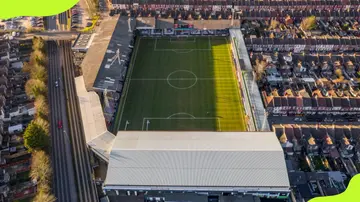
The Kenilworth Road stadium has been the home ground of Luton Town since 1905. The stadium has also hosted women's and youth international matches, including the second leg of the 1984 European Competition for Women's Football final.
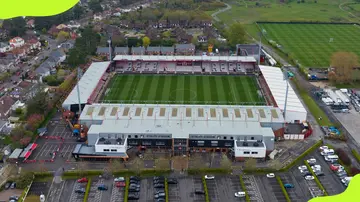
Liverpool's rivals: Who are they, and what is the driving force behind these rivalries?
Football
Dean Court is known as the Vitality Stadium for sponsorship purposes. The place is the home ground of AFC Bournemouth. The ground was completely rebuilt in 2001, with the pitch rotated ninety degrees from its original position and the ground moved away from adjacent housing.

The Brentford Community Stadium is currently known as the Gtech Community Stadium for sponsorship reasons. It is the home of Premier League football club Brentford. It was used during the UEFA Women's Euro 2022 (Euros), which was held in England.

The top 20 greatest goalkeepers of all time in football history
Football
The Turf Moor stadium has been the home of Burnley FC since 1883. Football clubs other than Burnley have played "home" matches at the ground. A popular drink served at Turf Moor since the First World War is "Béné & Hot"— a French liqueur Bénédictine topped up with hot water.

The Craven Cottage has been the home of Fulham FC since 1896. The first match played at Craven Cottage was on 10 October 1896, when Fulham beat Minerva 4-0 in the Middlesex Senior Cup. Craven Cottage regularly witnessed crowds of over 30,000 and 40,000 before the start of WWII, and the record attendance for a match at the Cottage (49,335) was against Millwall in 1938.
Which are the 15 richest sports leagues in the world currently?
Other Sports
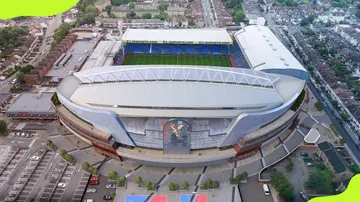
The Selhurst Park football stadium is the home ground of Premier League side Crystal Palace. It has hosted international football and games for the 1948 Summer Olympics. The stadium was shared by Charlton Athletic from 1985 to 1991 and Wimbledon from 1991 to 2003.
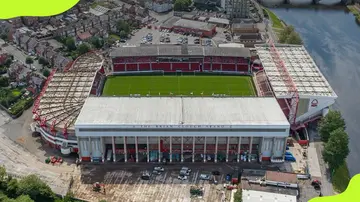
Who are the top 25 best strikers in the world? Profiles, stats, more
Football
The City Ground has been home to Nottingham Forest FC since 1898 and has a capacity of 30,404. Throughout the 1900s, Notts County also regularly used the City Ground for home matches when their usual venue at Trent Bridge was unavailable for football due to cricket taking precedence.
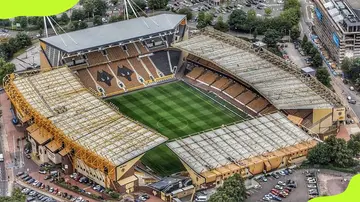
The Molineux Stadium is in Wolverhampton, England. It was built in 1889 and opened that same year. The stadium has hosted the England internationals, the England under-21 internationals, and the UEFA Cup Final in 1972.
Which are the best soccer leagues in the world? A ranked list of the top 12
Football
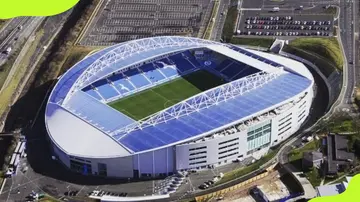
The Falmer Stadium is known as the American Express Stadium for sponsorship purposes and is more commonly referred to as the Amex. The stadium was one of the ten venues that hosted UEFA Women's Euro 2022 matches.
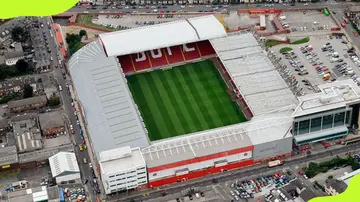
Bramall Lane is in Sheffield, South Yorkshire, England. It is the home stadium of Sheffield United Football Club. Bramall Lane is one of the oldest football venues in the world and has a rich history. The stadium's capacity has varied over the years due to renovations and modifications.
Identifying the best Dutch soccer players throughout history
Football
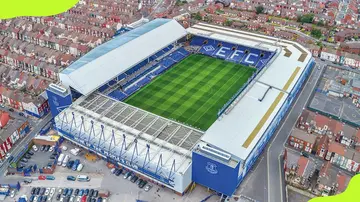
The Goodison Park, located in the Walton area of Liverpool, has hosted Everton since 1892. It is one of the oldest Premier League fields. However, the Toffees plan to move to their new Everton Stadium at Bramley-Moore Dock in 2024.
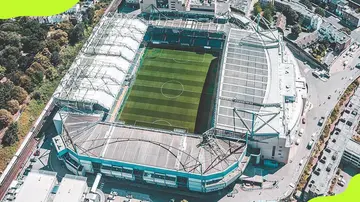
Chelsea's home ground, Stamford Bridge, ranks ninth in the English Premier League stadium capacity. The Bridge used to have a running track, but it was removed during renovations in the 1990s. Chelsea players have used the arena since the club's formation in 1905.
Who are the 10 fastest rugby players in the world currently?
Rugby
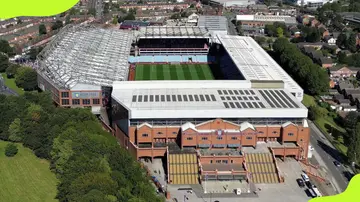
Villa Park has hosted Aston Villa since 1897. It originally had a bowl shape and a cycling track, which the club removed in 1913 during renovation. Villa Park has four stands: The Holte End, Trinity Road Stand, North Stand, and Doug Ellis Stand. It once got voted Britain's best experience.
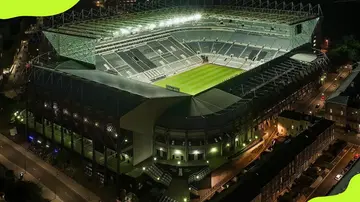
EPL team values: What is the market value of your favourite English Premier League team?
Football
St. James' Park, built in 1880, is in Newcastle upon Tyne, England. It is one of the oldest grounds in the UK. Newcastle United started using it in 1892. St James' Park has a unique design and is famous for its wild atmosphere, created by Newcastle fans. Its highest attendance was on 3 September 1930, when 68,386 filled the stadium to witness a 'poor 'game between Newcastle and Chelsea.
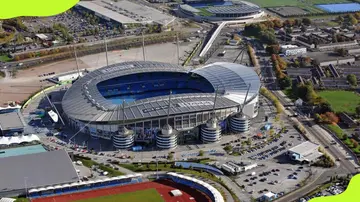
Manchester City's Etihad stadium was opened in 2003, making it one of the largest in the Premier League. The ground has won many awards because of its unique bowl design and cable-stayed roof structure. Many opponents fear visiting the arena because of the wild atmosphere created by home fans and City's dominance.
A ranked list of the most dangerous F1 tracks in the world
Formula 1

Emirates Stadium's capacity is more than the club's former arena, Highbury, which had 38,419 seats. The current home ground is also known as Ashburton Grove. The Gunners opened it in 2006 to replace Highbury. Emirates Stadium also has one of the highest ticket prices in Europe.
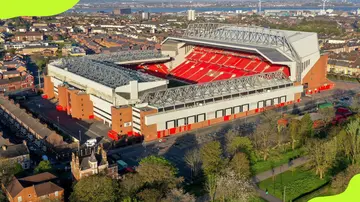
The Anfield stadium is one of the toughest football grounds to play. It has four stands: the Main Stand, Sir Kenny Dalglish Stand, Anfield Road End, and Spion Kop Stand. Liverpool rebuilt the Anfield Road End and expanded the capacity of their home ground to around 61,276.
What is the Premier League’s minimum salary and who are the 10 least paid players in the EPL?
Football
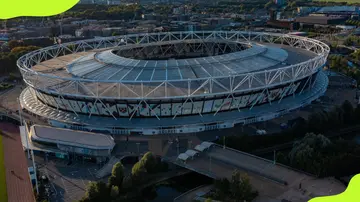
The London Stadium is the home of West Ham, with a regulated capacity of 62,500. It was previously known as the Olympic Stadium. The arena was constructed and used for the 2012 Summer Olympics and Paralympics. In August 2016, the Hummers moved from their home ground Upton Park to the current one. In July 2023, singer The Weeknd broke the London Stadium's record for highest attendance when 80,000 fans attended his show.
Real Madrid and Chelsea players: The best footballers to ever play for the Los Blancos and the Blues
Football

The facility opened in 2019 and replaced Tottenham's old White Hart Lane, which had 36,284 seats. Tottenham Hotspur Stadium cost around $1.08 billion to construct. It has state-of-the-art facilities with modern technologies. The arena also has the world's first dividing, retractable pitch, revealing a synthetic turf field for NFL games and concerts.

Which are the 20 most followed sports teams on Instagram and how many followers do they each have?
Other Sports
The "Theatre of Dreams" is one of the most recognizable grounds in the world. It originally opened in 1910 and has since undergone several renovations. It is also the second largest in the UK, behind Wembley. Old Trafford has four stands: the Sir Alex Ferguson Stand, Sir Bobby Charlton Stand, West Stand, and East Stand.
The capacity of home stadiums of teams that currently play in the Premier League is:
Rank | Stadium | Capacity | Team |
1. | Old Trafford | 74,031 | Manchester United |
2. | Tottenham Hotspur Stadium | 62,850 | Tottenham Hotspur |
3. | London Stadium | 62,500 | West Ham United |
4. | Anfield | 61,276 | Liverpool |
5. | Emirates | 60,704 | Arsenal |
6. | Etihad | 53,400 | Manchester City |
7. | St. James' Park | 52,247 | Newcastle United |
8. | Villa Park | 42,530 | Aston Villa |
9. | Stamford Bridge | 40,173 | Chelsea |
10. | Goodison Park | 39,414 | Everton |
11. | Bramall Lane | 32,050 | Sheffield United |
12. | American Express Stadium | 31,876 | Brighton & Hove Albion |
13. | Molineux | 31,750 | Wolverhampton Wanderers |
14. | City Ground | 30,404 | Nottingham Forest |
15. | Selhurst Park | 25,486 | Crystal Palace |
16. | Craven Cottage | 24,500 | Fulham |
17. | Turf Moor | 21,744 | Burnley |
18. | Brentford Stadium | 17,250 | Brentford |
19. | Vitality Stadium | 11,307 | AFC Bournemouth |
20. | Kenilworth Road | 10,265 | Luton Town |
Which is the most relegated team in EPL? A top 10 list
Football
The PL has set strict requirements that each arena in the league must pass to be fit for use. According to the rules, the minimum capacity for a Premier League stadium is 5,000, including 2,000 seats. Teams should also put safety measures in the arenas, like having sufficient stewards, security, and floodlighting.
Manchester United's complex, Old Trafford, has the largest capacity in the league, accommodating up to 74,031 people. The arena is also the eleventh-largest in Europe.
Premier League stadiums that have the highest capacities in 2024 are:
Rank | Stadium | Capacity | Team |
1. | Old Trafford | 74,031 | Manchester United |
2. | Tottenham Hotspur Stadium | 62,850 | Tottenham Hotspur |
3. | London Stadium | 62,500 | West Ham United |
4. | Anfield | 61,276 | Liverpool |
5. | Emirates | 60,704 | Arsenal |
6. | Etihad | 53,400 | Manchester City |
7. | St. James' Park | 52,247 | Newcastle United |
8. | Villa Park | 42,530 | Aston Villa |
9. | Stamford Bridge | 40,173 | Chelsea |
10. | Goodison Park | 39,414 | Everton |
Who is the best pool player ever? Top 12 billiard players of all time
Other Sports
The Kenilworth Road Stadium of Luton Town FC will have the smallest Premier League stadium capacity in 2024, hosting around 10,265 people.
The Kenilworth Road Stadium of the Luton Town FC is the smallest in the Premier League, with a capacity of 10,265.
Premier League stadiums that have a 50,000 capacity and more are:
Rank | Stadium | Capacity | Team |
1. | Old Trafford | 74,031 | Manchester United |
2. | Tottenham Hotspur Stadium | 62,850 | Tottenham Hotspur |
3. | London Stadium | 62,500 | West Ham United |
4. | Anfield | 61,276 | Liverpool |
5. | Emirates | 60,704 | Arsenal |
6. | Etihad | 53,400 | Manchester City |
7. | St. James' Park | 52,247 | Newcastle United |
Many PL teams have fans around the world. However, some clubs attract larger crowds at home than others. Here are the top six for attendance percentage during the 2023-24 season.
Top 20 most successful clubs in England as of 2024: trophies and values
Football
Etihad Stadium of Premier League club Manchester City has a capacity of 53,400.
The Tottenham Hotspur Stadium has a capacity of 62,850.
Premier League club Liverpool's Anfield stadium has a capacity of 61,276.
The capacities of the 10 largest stadiums in the UK are:
Rank | Stadium | Capacity | Team |
1. | Wembley Stadium | 90,000 | English national team |
2. | Old Trafford | 74,031 | Manchester United |
3. | Tottenham Hotspur Stadium | 62,850 | Tottenham Hotspur |
4. | London Stadium | 62,500 | West Ham United |
5. | Anfield | 61,276 | Liverpool |
6. | Emirates | 60,704 | Arsenal |
7. | Etihad | 53,400 | Manchester City |
8. | St. James' Park | 52,247 | Newcastle United |
9. | Stadium of Light | 48,707 | Sunderland |
10. | Villa Park | 42,530 | Aston Villa |
Top 25 most successful football clubs with the most trophies as of 2024
Football
Most Premier League stadiums accommodate between 10,000 to over 50,000 people.
The Wembley Stadium's capacity is 90,000, making it the largest in the UK. It also ranks among the most famous and historic arenas that have hosted top sports events, including the Champions League final. The Football Association (FA) owns the ground, home to the England national football team.
The minimum stadium capacity for a Premier League stadium is 5,000, with at least 2,000 seats.
Most Premier League stadium capacity sizes are better than other grounds of top European clubs. Besides hosting football and other sports events, the arenas are tourist attractions. Many people travel from across the globe to visit the grounds and enjoy their unique features.
Sportsbrief.com published a list ranking the best gymnasts in the world. The sport is more challenging than it may seem since it requires a lot of precision, coordination, and flexibility.
Globally, the sport is dominated by women who have worked hard enough to prove that they deserve recognition and the spotlight. Learn more about the best gymnasts in the world today.